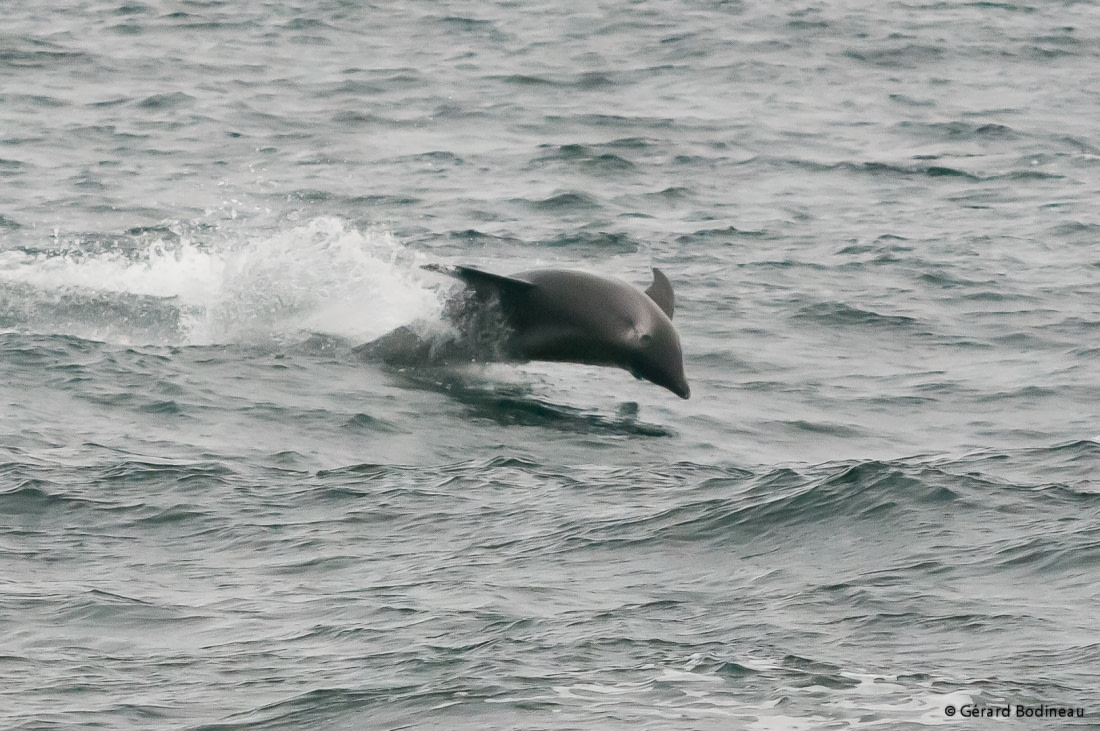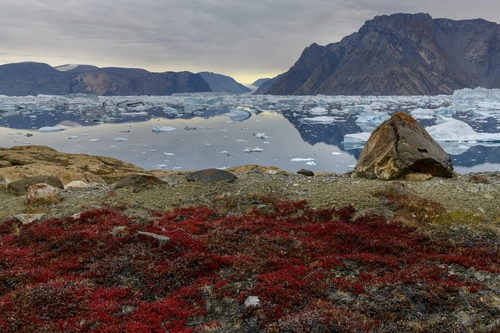Name: White-beaked dolphin, squidhound (Lagenorhynchus albirostris)
Length: 2 to 3 metres (6.6 to 9.8 feet)
Weight: 180 to 350 kg (400 to 770 pounds)
Location: North Atlantic Ocean
Conservation status: Least concern
Diet: Fish, crustaceans, cephalopods
Appearance: Short, white beak. Curved dorsal fin. The body is dark gray or black, with white patches, and white or light-colored bands down the flanks.
How do white-beaked dolphins feed?
When hunting surface fish, dolphins may work together to herd prey into smaller areas, making it easier to scoop them up. When foraging alone, they head to the bottom, usually no deeper than 700 metres, to snack on bottom-dwellers.
Are white-beaked dolphins social?
White-beaked dolphins are very social, interacting with other dolphins, orcas, humpback, minke, and fin whales. They usually live in groups of less than 30 but can form massive groups of up to 1,500. They are playful and curious around humans and boats.

How fast do white-beaked dolphins swim?
They can reach speeds of 45 kph (28 mph).
What are white-beaked dolphin birthing rituals like?
They mature sexually at around seven years. Breeding occurs from May to September, with a gestation period of 11 months to a year. Calves are about one metre long (three feet) and weigh around 40 kg (88 pounds).
How long do white-beaked dolphins live?
Their life expectancy is unknown, but dolphins generally live about 40 years in the wild.
How many white-beaked dolphins are there today?
The population is estimated to be at least over 100,000.

Do white-beaked dolphins have any natural predators?
Orcas and larger sharks are their natural predators. Rarely, polar bears may prey on them.
Seven wonderful white-beaked dolphin facts
1. The genus name Lagenorhynchus comes from Latin words meaning "bottle" and "beak."
2. The scientific name albirostris means "white beak."
3. They are the largest in the Lagenorhynchus genus.
4. They have been seen harassing whales to create a wake for swimming.
5. Each dolphin has a unique tonal range in its clicks and whistles, allowing group members to identify the communicator.
6. Their clicks and whistles can convey various messages, such as mating, danger, or finding food.
7. Pods can be segregated by sex, with all-male pods called "alliances" and all-female pods called "parties."






Related Trips



Ice streams and lakes under the Greenland Ice Sheet

Northeast Greenland National Park

Harp seals harping on in Greenland

Greenland: East vs. West

Tracking Greenland’s Wildlife from Space

Greenlandic Inuit Beliefs

How and When Did Greenland Become Covered in Ice?

Peaks, Fjords, and Auroras: 14 East Greenland Attractions

The Norse Settlement of Greenland

10 Traits of Post-Ice-Age Greenland

Under the Greenland Ice Sheet

Traditional Lifestyles of the Inuit

Five Birds You Might See on Your Greenland Cruise

The Arctic Hare: Easter Bunny

5 Misconceptions You Might Have About Greenland

Scoresby Sund: the Greatest Greenland Adventure

Discover the Scoresby Sund Fjord System in East Greenland

Not Eskimos: 10 Enlightening Facts About the Inuit

The bowhead whale, whaling about the Arctic






 20 Days / 19 Nights
20 Days / 19 Nights
